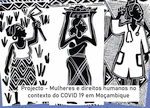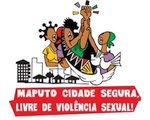Gender Identity and Sexual Life1
Conceição Osório and Teresa Cruz e Silva
Published in “Outras Vozes”, nº 28, supplement, November 2009
Over a period of two years research was carried out in the province and city of Maputo, and in the provinces of Zambezia and Cabo Delgado to identify the processes and mechanisms that guide the construction of young people’s identities, i.e. differentiation of the feminine and the masculine in schools.
The aim of this article is merely to develop a first reflection on how information on sex is appropriated, what it reveals about a power structure based on gender inequalities. The analysis of representations of sexual life as information leads us directly and “brutally” to the “use” of the body (ours and that of ‘others’) and highlights the articulation between gender identities and sexual identities.
Thus the first question raised when analyzing the sexual life of young men and women is the relationship between the information they obtain in various different spaces and their appropriation of it: how are the various socialization influences combined and/or how do they overlap, leading to the emergence of new images/representations and practices? This means we want to know:
- In the first place, how they cut across each other, continuing and discontinuing the norms and guidelines on conduct contained in socialization processes in order to compose or construct female and male sexual identities.
- Second, we want to understand how young men and women use and communicate these norms or elaborate others in their discourse, to break, include and adjust their truths.
- Finally, it is also important to know how lessons about male domination occur in different contexts, what are the main ways in which they are expressed, and how they can be concealed (or not), and destructured.
Looking at the information produced in school we find two situations. The first is that learning about sex is limited to reproduction. As it does not articulate rights with biological mechanisms, this dehumanizes and eliminates the experiences lived by girls and boys. By placing the issue far from the experiences of boys and girls, the educational discourse on reproduction makes the sexual relationship a morality issue, such that it is only desirable and legitimate between adults. So not only is the information insufficient, it is deliberately insufficient, influenced by normative standards that try to transmit a model of sexual behaviour based on gender attributes. This means that, as far as girls are concerned, ignorance is simultaneously a virtue and a form of knowledge that structures the construction of the feminine.
A second situation, and one that to some extent conflicts with what we have just said, is that today there is widespread information on HIV/AIDS that is almost obligatory in the social discourse, because knowledge about the disease is an element of social inclusion. As a modern space, the school has an important role in transmitting this knowledge. But how to do it without challenging the marks of gender? This is a dilemma that, although dependent on social contexts (rural/urban) is resolved by emphasizing prevention, which could lead to the appearance of conflicts between family values and school values.
However, what happens is that the system of prohibitions that penalize sexual relations between young people, is reinforced in school by a bureaucratic discourse of prevention based essentially on abstinence. It is interesting to find that, even when talking about condoms, this does not take into account the fact that we are speaking to young people who have an active sexual life and that sexual relations are structured by gender power. Seeking to preserve the attributes conferred on women and men by a discourse of “pretend”, conveying idea that sex is foreign to young people and that their sexual lives have not yet begun, the school has no active role in building new practices.
The knowledge transmitted to young people involves two situations:
- One is the impossibility of controlling the information that boys and girls receive (and also the processes and mechanisms of peer group interaction). This results in the production and propagation of rumours, mainly in contexts where social vigilance is subject to the diffuse threats brought by new dynamics. This is the case of two stories that are current in schools in the capital of Cabo Delgado: one about an eventual sex championship, to take place in a house, with a jury controlling the sexual performance of the young people. Another story, so widespread and rebuilt (with names and places) that it becomes “true”, describes the discovery of a pornographic film where the participant is a young school girl. When we wanted to study the matter in more detail, every one showed that they knew about it (sharing the same repugnance), but it was totally impossible to know if it had really happened, or if it was only a mechanism of recomposing and re-establishing social cohesion.
- The other is that the need for and existence of control over information on sex – expressed, for example, in the moralistic and hypocritical discourse that “more information, more promiscuity” – has an underlying ideology that denies the rights of young people. In other words, they receive information that is filtered and with an educational model that does not help them to think and act, and that does not give girls and boys the possibility of having rights. This becomes even clearer with the discovery that young people have virtually no participation in defining policies that protect their rights. In other words, young people are the target group of political discourse, but are not called on to build that discourse, and this is reflected in the way youth activism has been contemplated and promoted in Mozambique. This can be seen, for example, in information on contraception where a concept of adult family planning dominates, with no consideration of the particular characteristics of juvenile contraception, such that girls and boys do not recognize themselves in the institutional discourse. This is one reason why, although on the whole all young people can identify one or more of the most common methods, they are very ignorant about the circumstances under which they should be used. For example, young girls say they are guided by the calendar of the menstrual cycle, but when they try to explain they do so incorrectly. Others say that contraceptive pills can “damage the uterus”.
Three trends in the use of the condom were identified in the discourse of both boys and girls. The first, expressed by the majority in the target group, is characterized by “know and don’t use”. The second is represented by a small group who say that it should be used in all circumstances, and the third is expressed by a little under half of informants, who say they use a condom occasionally2. The different positions can be explained by their greater or lesser exposure to information obtained from the media or through youth organizations, leading to two kinds of discourse. One is more or less influenced by the politically correct while the other explains that condoms are used because of female promiscuity. This was illustrated in the following statement:
“The man distrusts the woman (…) because a woman can have five sexual relations in a day while for a man one is enough” (Leonardo 2).
This perception – that girls are agents for spreading disease – is associated, mainly in Cabo Delgado, with accusations of witchcraft:
“I use the condoms with ladies. (…) These women are crazy (…) they are already pregnant; they say we just have to stay with them. (…) Otherwise you will not live much longer” (Victor)3.
Not using a condom, a situation that is valid for rural and urban areas, translates a social agreement on the futility and irrelevance of the condom as a means of safe sex. The discourse of young people thus agrees with that of other social groups and socialization entities, who are living ambiguously between disseminating the use of condoms and social values based on fidelity, on abstinence and on the common, often veiled, association of promiscuity with condom use.
The differences between boys and girls lie in the inability of girls (irrespective of their social origin and age) to use the information to impose a change in behaviour, as stated by informants in Cabo Delgado.
“Some boys don’t want it. And some threaten us. They say I’ll hit you” (Dora 1).
However, it seems to us that sometimes the discourse of lack of decision-making power conceals adherence expressed as social representations of sexual relations that include penetration and ejaculation:
“Some girls do not agree, they don’t want a condom. (…) They say it contains a little insect. (…) If you leave them out in the sun you can see some little insects there” (Dora 1).
For many young girls using a condom means that partners are unfaithful, means disrespect and failure to assume the sexual relationship as a relationship of commitment (Silva et al. 2007; Casimiro et al., 2002).
As other research has shown (Silva et al., 2007; Casimiro et al., 2002) a condom is only used occasionally. In other words, although some pupils interviewed said they used it, they also gave a number of arguments in support of unprotected sex: being faithful, a condom contains “little insects”, no pleasure (we want “nhama with nhama“)4.
As regards the issue of who should decide, although some boys think that girls should be the ones to impose the use of condoms (“because we men are enthusiastic”, “because they are the ones who get pregnant”), most said that the men should (and can) take the initiative. This is because, for example, among the young people interviewed in Cabo Delgado province, the use of a condom is still not considered natural; some use it irregularly, others only for occasional relationships.
Compared to the other spatial study units, their discourse indicates a more relaxed approach to using a condom. The situation becomes more disturbing when the discourse of the young people attribute initiative in sexual relations and condom use to men, once again with the greatest incidence in responses in spatial study units in Cabo Delgado. In this province, where the positions taken by many young men are loaded with characteristics that illustrate a socialization process marked by externalizing competence as in command, thus reconfirming the effects of the construction of a dominant male model.
Although our study did not look for information that might eventually help understand a possible relationship between young men not using a condom and Islamic beliefs; we cannot ignore the fact that its use is considered illicit (haram) by some sections of Islam because, like the use of other birth control methods, it is not foreseen in the Koran (Bonate, 2006). This does not mean, however, that we have not met some opinions favourable to equality in making decisions about initiative in a sexual relationship or the use of the condoms, and although in rarer cases, that leave it up to girls to take the initiative in proposing use of a condom to protect themselves from an eventual pregnancy or infection with STD/AIDS.
Although they all recognize the importance of condoms in preventing sexual diseases, in most cases their use is associated with preventing pregnancy and only occasionally protection against STD. However, except for a small group of girls in Maputo province, who associate condom use with protection, there is no relationship between rights and safe sex, neither in terms of using the ability to demand a condom, nor as regards having sexual relations.
“If you ask them to use a condom they may think that you are a whore” (Alberta 4).
Other young girls justify not using a condom on the grounds that they want to get pregnant. As a young girl told us in Cabo Delgado province:
“I don’t want a condom because I want you to make me pregnant” (Felisberta 2).
Along the same lines, there is some ambivalence and tacit understanding about the possibility of denying or requesting sex, i.e. almost none of the girls, even those who say that they always demand a condom, recognize that they have the right to deny or request sex.
“It is not nice for girls to take the initiative. (…) They can take the initiative, but the problem is that boys start to think you are a prostitute, that you conquer men and men can go with you just to take advantage of you” (Berta 6).
And according to a young girl in Maputo province:
“It is good to like and to be liked. (…) Obviously, if you do not accept he will look for someone else; I am not interested in you. It’s over” (Tamara 2).
The media, eroticism/pornography and juvenile behaviour
The expansion of modern media raises innumerable issues about the impact that soap operas, violence, erotic images, especially images of the female body exploited for publicity, and pornography, can have on the behaviour of young people. They could produce “socially undesirable behaviour such as seeking sex for its own sake, sexist and aggressive behaviour (…) and a whole range of sexual crimes” (Guerra, Andrade and Dias, 2004: 269).
There are virtually no studies in Mozambique on the media’s impact on the construction of identities, with perceptions of their impact by educators and our target groups, filtered by prevailing moral values and social norms. Consequently, young people, parents and teachers frequently claim that films (that, for a minute payment can be seen even in the furthest corners of the country), the Brazilian soaps shown on various television channels throughout the country and, less frequently, erotic images and pornographic films, are to blame because of their bad influence on the behaviour of their children.
In all the spatial study units we found that most young people watch television programs and are aware of the most recent events transmitted by Brazilian soaps or other programs, on Mozambican television channels and those of neighbouring countries (for those living in border areas). Even so, in some parts of Cabo Delgado and Zambézia there are young people whose families’ financial situation means they do not have access to television, especially in rural areas. If, on the one hand, young people discuss television programs among themselves, especially soaps and television series, on the other hand they also claim that these programs encourage them to start their sexual lives earlier and influence how they dress. In turn, educators also blame the media for the behaviour of their children:
“Because of the soaps our daughters try sex very early compared to our days. We may not teach them, but they know about it through soaps (…) soaps have liberalized sex, today there is no secret about sex. Sometimes I wonder why we are wearing clothes, what are we hiding? If everything is exposed in the street, on television screens”5.
In the first phase of our field work in the urban districts of Maputo city and in Zambezia province, we came across constant reference to the impact of the media, in particular the “harmful effects” of pornography on the behaviour of young people. So in the second phase of the field research, in 2007, we tried to study this topic in more detail in the Maputo and Cabo Delgado provincial spatial units. One of the issues we addressed was the different perceptions of pornography conveyed in the discourse of our target group and key informants, not to mention the difficulty of locating the boundary between eroticism and pornography.
Our starting point was that eroticism expresses ambiguous relationships between aesthetics, desire and seduction (Kaufmann, 2005) and that pornography is “a representation of erotic behaviour in books, images, films etc. intended to cause sexual arousal”6. According to Giddens, even if it is partial, sex can be transformed into a product. (Giddens, 1993). Consequently, in this study we tried to gain an understanding of young people’s perceptions of the effects of exposure to this kind of information on their sexual socialization, and its impact on the formation of positive and negative attitudes. Although it was not possible to draw even preliminary conclusions based on the data obtained during the study, we were able to identify some indicators pointing to the following situations:
- Erotic images of women in paper or electronic form (transmitted through the Internet or cell phones), pornography in the form of printed pictures, videos, or transmitted in electronic form, are seen by both sexes, although more boys than girls say they watch/see them. In both cases, this type of information is obtained predominantly through films with explicit images of heterosexual sex, seen in video rooms or at home, with films rented or borrowed, in the absence of parents/guardians, or during the night when they have gone to bed, and without their knowledge;
- In most cases, those who say they have seen pornographic/erotic material at least once, either think it normal or, in most cases, give “moralistic” excuses and opinions about the harmful effects of the information and the lack of content in their messages;
- The third situation, recounted by boys, perceives the consumption of this material as: a) good for their sexual education: “teaching how to kiss and have sex”; “teaches the various positions”, stimulating the best ways of obtaining pleasure; b) morally prejudicial to the man/woman relationship such that, while stimulating the desire for new experiences, it should be done with “other women” with whom they have no emotional involvement, not with their partners or girlfriends, because it is “offensive”. Along the same lines, Giddens says, “pictures of women in pornographic magazines (…) are objects of desire, but never love. They excite and stimulate and, of course, they are quintessentially episodic (Giddens, 1993:134); c) they cause depravity7, leading some to masturbate due to “affective privation”.
As already mentioned, there is specialization among the different entities involved in providing information on sex. If the family is responsible for transmitting knowledge shaped by values, if the school is expected to transmit technical knowledge, if the media ranges from information that conveys order (through a politically correct discourse) and disorder (through soaps, songs etc.) in values, it is within their group of friends that young people reflect on and recompose their experiences. As other studies have shown, in the passage from the family field to the school field and the peer group, the arrangements that “compose” the habitus are changed and reconstructed (Pappámakail, 2007). So watching films, especially those considered pornographic8, are not only a source of information, they are also a means whereby young people reconstruct representations and refresh their practices.
By appearing to give women the right to sexual pleasure (made explicit by gestures, moaning and language), in an apparent infringement violation of the norm (good and bad women, Eve and Mary), pornography fits a matrix where desire is a subordinate desire, a desire that is part of the paraphernalia of male pleasure and that justifies physical violence against women (whipping, beating etc.) (Barbosa and Nogueira, 2005).
Consequently, for a surprising number of boys (over 60%), in addition to their friends, information about sex is obtained from the dissemination activities of youth organizations, through television and through pornographic films. Nevertheless, there are boys and girls with a clear position that rejects pornography, associating it with violence, as shown by these statements by young people in Maputo province:
“There is one who watched and then went out and raped an old woman (…) those films mess with people’s heads” (Gil 3).
“When I saw it I felt sick, it’s as if it were rape, so I switched it off” (Tâmara 1).
A group of young people in Cabo Delgado:
“I don’t like it, as soon as I see strange positions I go to bed and sleep. (…) That position is not normal, I feel sorry for the women. (…). It’s a punishment” (Luis 3, Leonardo 3).
These statements show that while these films can cause indignation because they are so crude, they show decisively how a woman can be transformed into an object, making violence natural, and making it explicit in gender violence. When boys say that they try out pornography “with women”, it shows two things: first, the tension mentioned by Giddens (2002) between male pleasure and producing pleasure through relations with girlfriends (where reciprocity is expected and intimacy is implied), and that is resolved (by reducing risks of male anxiety) in pornography.
The second, which may not conflict with the previous finding, is that pornography represents both an extreme form of exercising male power, and also a violation of the cohesion of the domination model and social morals. In other words, if girls who participate in pornographic games to the extent that they lose completely their human condition and their condition as partners, transforming themselves in non-subjects, boys can free their sexual desires. In this case, pornography provides not just new knowledge but knowledge for the exercise of male power (Abramovay and Rua, 2002) i.e. even when not applied, it synonymous with “to be able to do”, exemplified by these statements by young people in Maputo and Cabo Delgado provinces:
“We learn to enjoy what a woman has to give” (Zair 1).
“We learn positions and comment, hey, did you see that chick moan?” (Jorge 3).
To be brief, what we find when analyzing information on sex and appropriation by boys and girls, is the conflict between the social norm that, by controlling knowledge, is intended to guide behaviour, between the cracks in the norm (or outside it), the use of resources that are contradictory and that jeopardize it.
Because of the mechanisms used, the learning transmitted in the family, the school and the media, intended to configure truths about the body in accordance with the cultural model, is faced with unexpected appropriation by boys and girls. This is either because the individualization processes make it possible to break and/or rebuild adherence to the values transmitted, or because the “official” socialization entities are themselves subject to change.
And this ambivalent situation, mutating and plural, produces highly heterogeneous representations, which may or may not influence the exercise of sexuality and equal rights between girls and boys. What is evident is that, on the one hand, the predominant conception of the sexual body configured around masculine power is maintained, and on the other hand, especially in the case of girls, there are positions that alternate between adherence to subordination and as well as the converse of this subordination.
Notes:
- This article is the result of research on the social/sexual identities of boys and girls, whose report is entitled “Buscando sentidos. Género e sexualidade entre os jovens estudantes do ensino secundário, Maputo“.
- The first and third tendencies sometimes overlap to such an extent in the discourse, especially that of boys, that it is difficult to distinguish between them.
- Some people believe that AIDS could be a strategy linked to witchcraft and that using a condom is a way of warding off its effects.
- Nhama means meat in Tsonga, one of the languages spoken in Maputo city and province.
- An old Shimakonde woman interviewed by Hilario Diuty, for which we thank him.
- Encyclopedia Britannica, 1999, cited by Guerra, Andrade and Dias (2004: 270).
- For Giddens, “pornography can easily become depraved due to its substitution capacity” (Giddens, 1993:135).
- It was not possible to study this issue in more depth, but many informants, including teachers and young people, feel that Brazilian soaps are pornographic, because of the images and the erotic discourse they convey. The absence of differentiation between pornography and eroticism shows clearly how control over sex and sexuality are strong features of male domination.
References:
Abramovay, M.; Rua M. (2002). Juventude, violência e vulnerabilidade social na América Latina: desafios para políticas públicas. Brasília: Unesco, BID.
Barbosa, C.; Nogueira, C. (2005). “Violência escolar e a construção social de masculinidades”. In: Actas do V Congresso Português de Sociologia, Lisbon.
Bonate, L. (2006). “Matriliny, Islam and gender in Northern Mozambique”. In: JRA n° 36, vol. 2. pp.139-166.
Casimiro, I. et al. (2002). Estudo de Base. Khuluvuka – Corredor de Esperança. Maputo: CEA/FDC.
Giddens, A. (1993). A Transformação da intimidade: sexualidade, amor e erotismo nas sociedades modernas. São Paulo: Editora UNESP.
Giddens, A. (2002). Identidade e Modernidade. Rio de Janeiro: Zahar Editora.
Guerra, V. M.; Andrade, F. C.; Dias, M. R. (2004). “Atitudes de estudantes universitários frente ao consumo de materiais pornográficos”. In: Estudos de Psicologia, n° 9, vol. 2. pp. 269-277
Kaufmann, J. C. (2005). Corps de femmes. Regards d´hommes. Paris: Nathan.
Pappámikail, L. (2007). “O lugar da autonomia: reflexões em torno das identidades juvenis e da família”. In: M. Vieira (org.), Escola, Jovens e Media. Lisboa: ICS.
Silva, T. et al. (2007). Representações e práticas da sexualidade dos jovens e feminização do SIDA em Moçambique: estudos de caso no centro e sul do país. Maputo: WLSA Mozambique.







 Information in English
Information in English



















